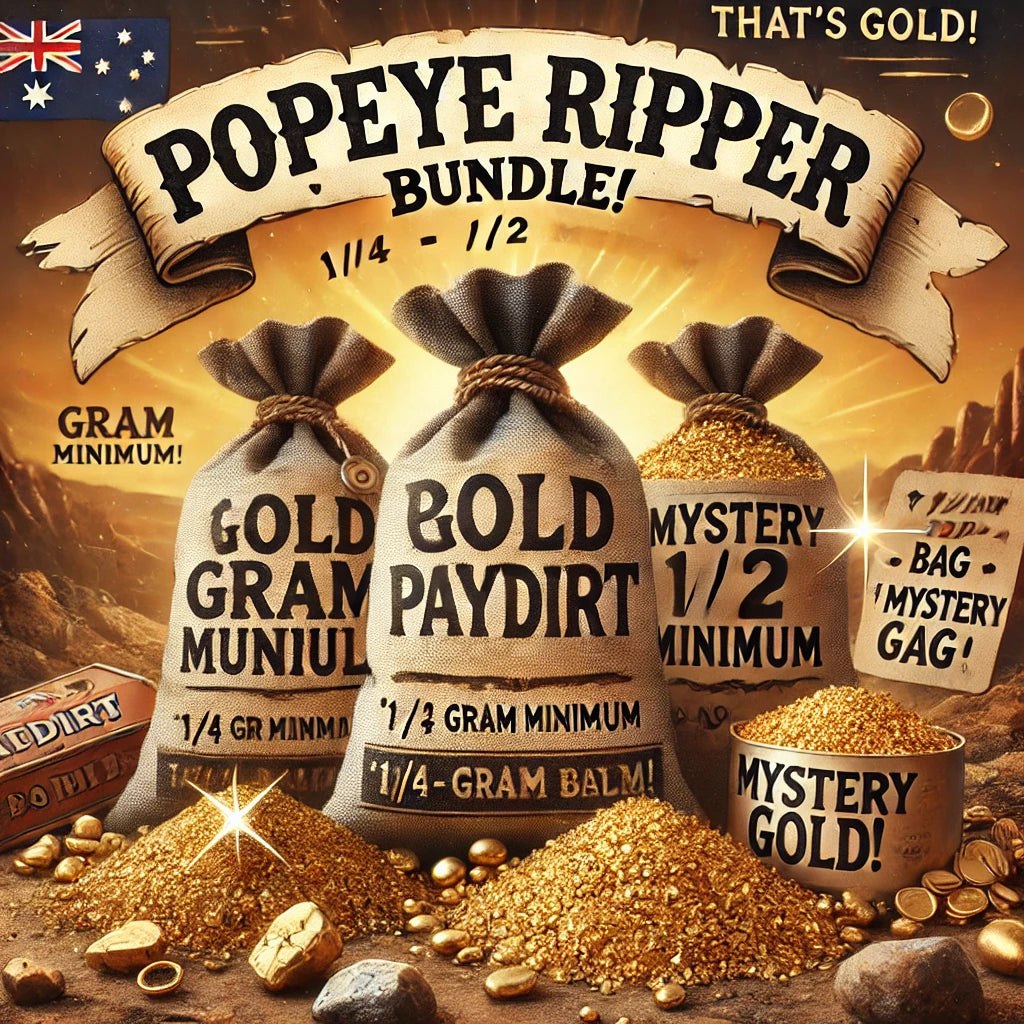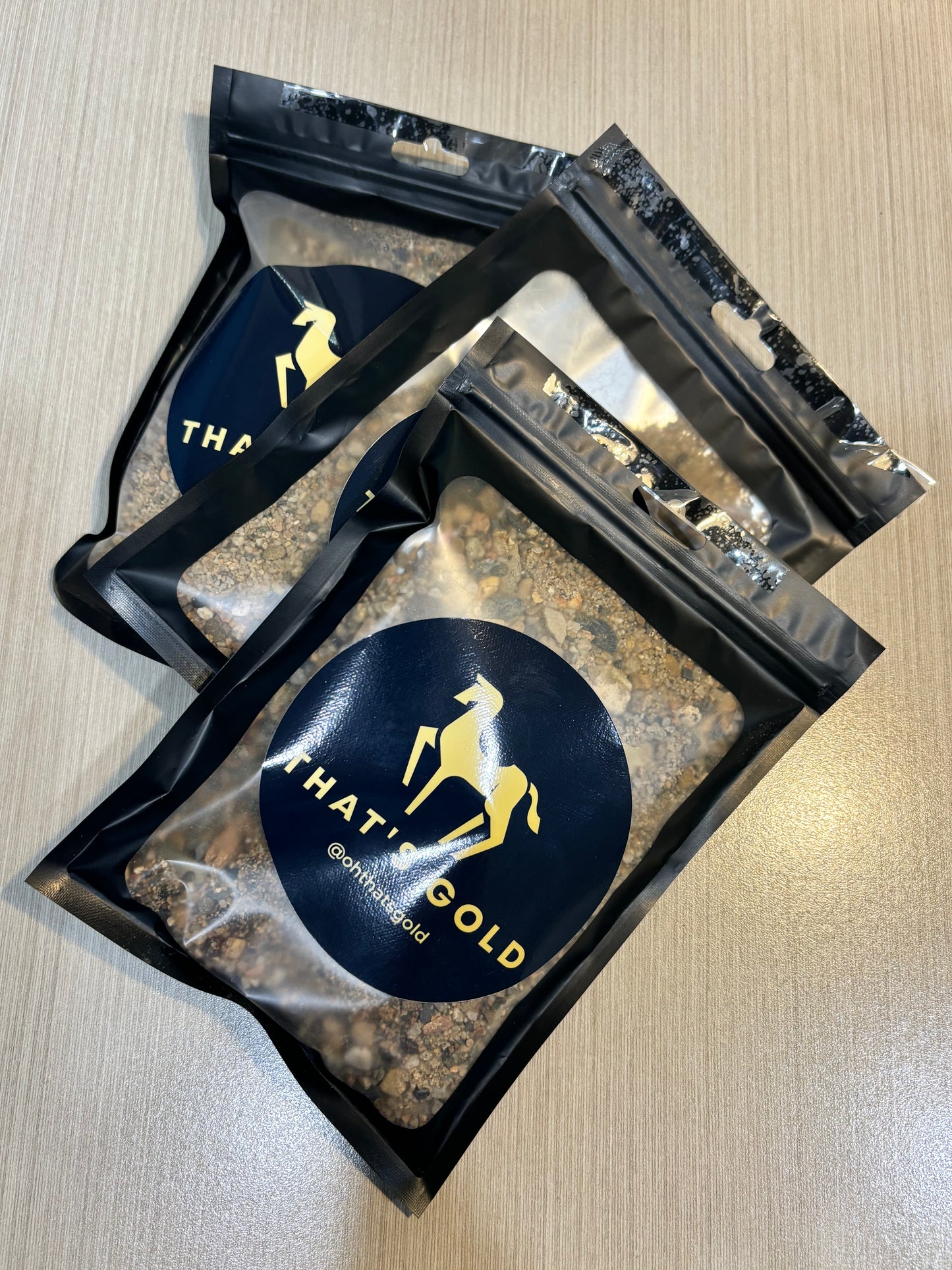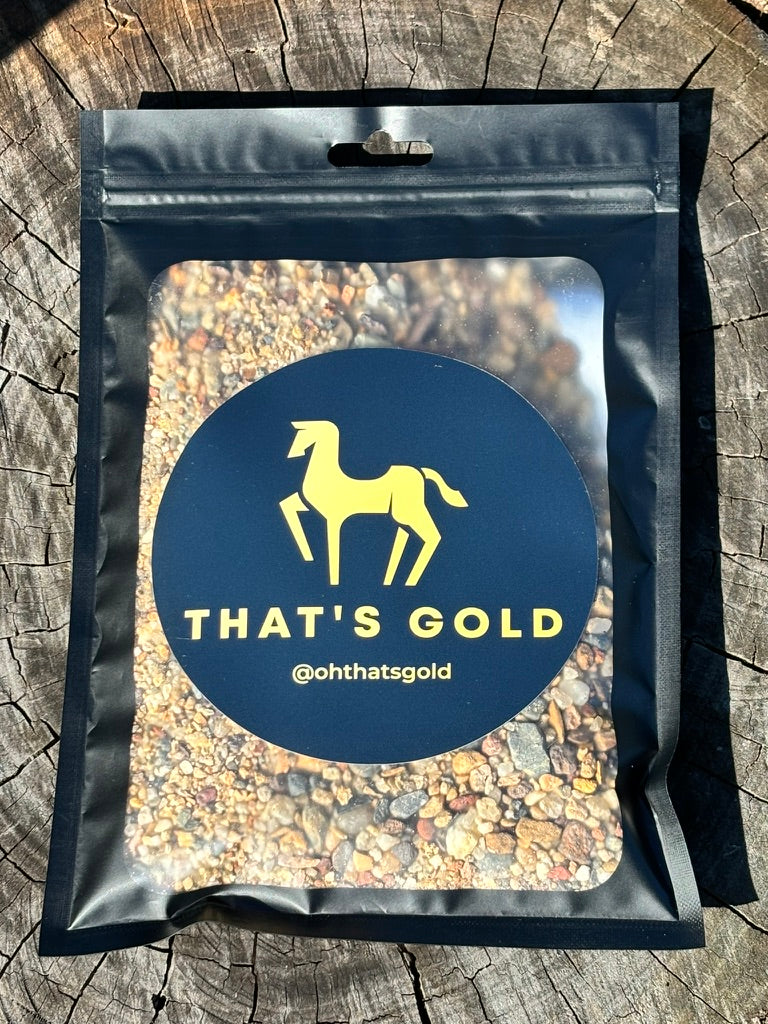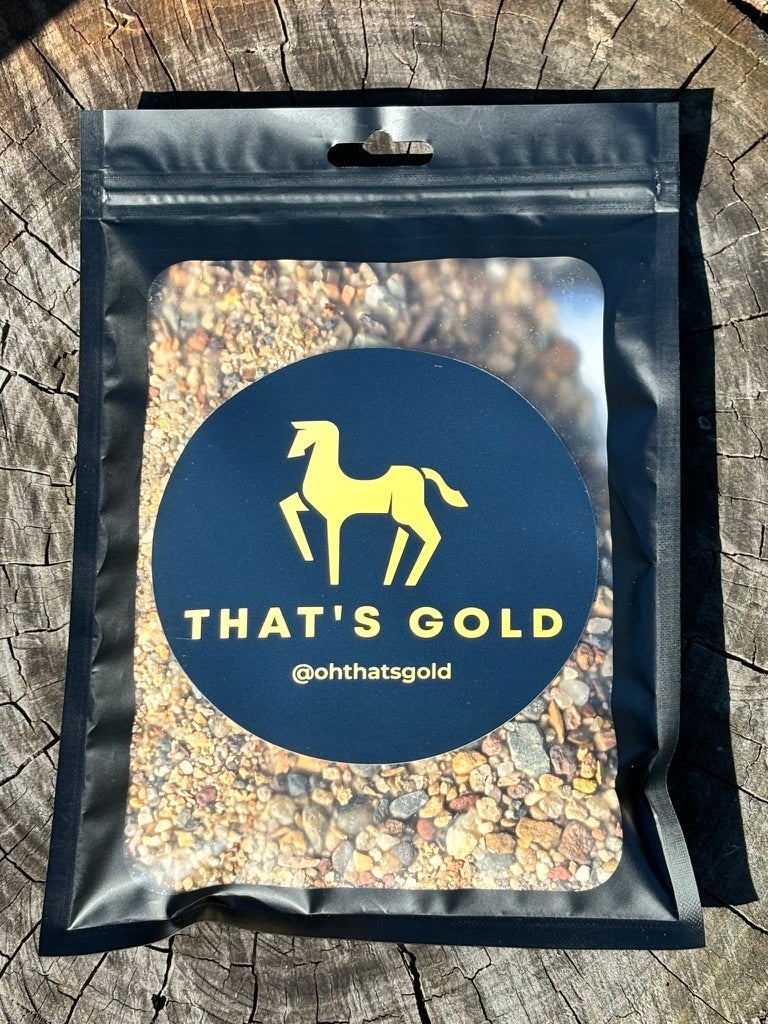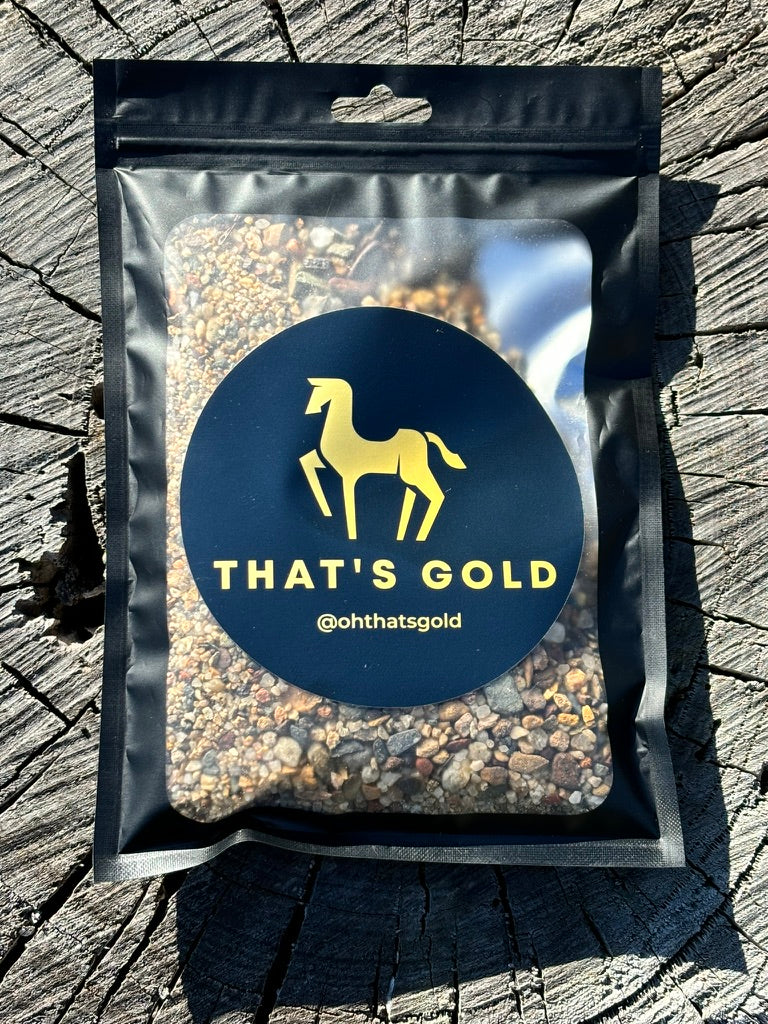Gold prospecting can be an exciting adventure, especially when one finds the best paydirt. That's Gold offers top-notch paydirt that can enhance your gold prospecting experience and support their YouTube channel at the same time. With a mix of fun, learning, and practical tips, readers are sure to gain valuable insights into the world of gold panning.

As the popularity of gold prospecting rises, so does the need for reliable resources. Engaging with channels like That's Gold not only provides quality paydirt but also connects enthusiasts with essential techniques and equipment tips. This blog post will explore the best paydirt options and the benefits of supporting channels that enrich the gold prospecting community.
For anyone passionate about gold mining, knowing where to find the best resources makes all the difference. Readers will discover how to enhance their treasure-hunting skills while supporting a channel that delivers practical and entertaining content about gold prospecting.
Key Takeaways
- That's Gold offers quality paydirt to enhance prospecting experiences.
- Supporting the channel nurtures a vibrant community of gold enthusiasts.
- Readers will find practical tips and insights into effective mining techniques.
Overview of Gold Paydirt

Gold paydirt consists of soil or sediment that contains gold particles, making it a popular choice for hobbyists and enthusiasts. Understanding the basics of paydirt and why people enjoy gold panning is key to appreciating this activity.
Defining Pay Dirt
Pay dirt is material that contains traces of precious metals, primarily gold. It often comes from locations where gold has been naturally deposited over time. This might include riverbeds, streams, or hillsides.
Gold paydirt is sought for both its potential value and the excitement it brings. People purchase bags of paydirt, usually from reputable sources, to sift through and find gold flakes or nuggets. The quality of pay dirt can vary based on its source and how it has been processed.
The Appeal of Gold Panning
Gold panning is a recreational activity that many find enjoyable and rewarding. The thrill of searching for gold can attract both beginners and seasoned prospectors. It provides a hands-on experience that connects them to nature and the history of gold mining.
The process involves using a pan to wash away dirt and gravel, leaving behind any heavier materials, including gold. Many enjoy the challenge and patience required in panning, while others appreciate the potential financial reward. Gold panning can also lead to community and camaraderie among enthusiasts.
The Role of YouTube in Prospecting

YouTube has become a vital tool for prospectors, providing a platform for sharing knowledge and experiences. It helps enthusiasts learn new techniques and stay updated on trends in the gold prospecting community.
Educational Content for Prospectors
Many channels on YouTube offer educational videos focused on gold prospecting. These videos cover a variety of topics such as:
- Basic techniques: These include panning, sluicing, and detecting.
- Gear reviews: Detailed looks at tools like metal detectors and pans.
- Field guides: Tips on where to prospect and what to expect.
These resources help both beginners and experienced prospectors develop their skills. By watching instructional content, viewers gain practical knowledge. They can see live demonstrations, which enhances their understanding. This makes YouTube a rich source for those wanting to improve their prospecting abilities.
Highlighting Prospecting Channels
Numerous YouTube channels specifically focus on gold prospecting. These channels create engaging content that attracts viewers. Some popular channels include:
- Gold Fever: Known for its in-depth tutorials and adventure vlogs.
- The Nugget Shooter: Offers tips and insights into metal detecting.
These channels not only entertain but also educate. They connect with the prospecting community, sharing challenges and successes. Viewers can exchange ideas through comments, creating an interactive learning environment. By following these channels, prospectors feel part of a larger community. This sense of belonging can motivate them to explore new methods and locations.
Mining Techniques and Tips

Knowing how to effectively extract gold and find the right locations is crucial for any prospector. By understanding specific techniques, one can improve their chances of discovering valuable placer gold.
Extracting Gold from Black Sand
Black sand often contains small particles of gold. To extract this gold, one common method is to use a sluice box. This device allows water to flow through while trapping heavier materials like gold.
Steps to follow include:
- Choose a Good Location: Find areas near rivers or beaches where black sand is present.
- Prepare the Sluice Box: Ensure the box is set up at a slight angle to help with water flow.
- Run Material Through: Feed the black sand into the sluice box in small amounts.
- Inspect the Mat: After running the material, check the sluice mat for any visible gold particles.
Using magnets can also help separate magnetic black sand from gold. This technique increases the chances of a successful recovery.
Identifying Gold-Bearing Areas
Finding gold-bearing areas requires some scouting and research. Prospective miners should focus on specific locations where placer gold may be found.
Key tips for identifying gold-bearing areas include:
- Look for Signs: Identify areas with signs of erosion, such as cliffs or river banks. Gold often collects in these spots.
- Study Topography: Use topographical maps to find rivers and streams. Gold is heavier and settles at the bottom of these bodies of water.
- Check Historical Data: Review local mining records or talk to seasoned miners about areas with successful gold finds.
By following these tips, prospectors can enhance their search for gold and increase their chances of success.
Equipment Essentials

The right equipment is vital for successful gold panning and prospecting. Selecting the proper tools can improve the chances of finding gold and make the experience more enjoyable.
Selecting the Right Gold Pan
Choosing a gold pan can impact a prospector's success. Materials matter; plastic pans are lightweight and float well, while metal pans are durable but heavier.
Size is also important. Common sizes range from 25 to 40 cm in diameter. Larger pans allow for more material, but smaller ones are easier to handle.
Features to consider include:
- Scoop edges that help trap gold.
- Riffles that catch gold while allowing lighter materials to wash away.
A good gold pan should have a deep bowl for separation. Prospective pan buyers can find many options at local stores or online.
Must-Have Prospecting Gear
Beyond a gold pan, certain gear is essential for any prospector. These items enhance comfort and effectiveness during outings.
-
Sifting Tools: Screens or classifiers help sort materials and remove larger rocks. This step speeds up the panning process.
-
Shovels and Trowels: Lightweight tools assist in gathering material. A small hand trowel is useful in tight spots.
-
Storage Containers: Use buckets to transport materials and keep tools organised. Airtight containers can also keep your finds safe.
-
Safety Gear: Gloves protect hands, while boots keep feet dry. Sunscreen and hats are important for sun protection.
Having the right equipment contributes to a more productive and enjoyable gold prospecting experience.
Geology and Gold Formation

Gold formation is deeply tied to various geological processes. Understanding the types of gold deposits helps in locating and mining gold effectively. There are specific characteristics of placer deposits and the origin of gold nuggets and pickers that are crucial for prospectors.
Understanding Placer Gold Deposits
Placer gold is found in sediments of rivers and streams. It occurs when gold is released from rock weathering and erosion. As rocks break down, gold particles settle in gravel beds.
Placer deposits are usually located where water slows down, allowing heavy gold to sink. These locations may include:
- Riverbeds
- Stream banks
- Floodplains
Miners often use tools like pans and sluice boxes to collect gold from these deposits. Efficiency in searching for these deposits can lead to successful finds of both small flakes and larger nuggets.
The Origin of Gold Nuggets and Pickers
Gold nuggets and pickers form when gold crystals grow larger due to natural processes. This can happen in a few ways.
Nuggets usually form inside quartz veins, where hot solutions deposit gold. Over time, weathering frees these nuggets, allowing them to be washed downstream.
Pickers refer to small nuggets that are often found in placer deposits. They are larger than fine gold but smaller than typical nuggets. The size and shape can depend on how long they have been in the water and the type of surrounding minerals.
Both nuggets and pickers are highly sought after by prospectors due to their value and rarity.
Legal and Ethical Considerations

When engaging in prospecting and using paydirt, it is crucial to understand the legal and ethical frameworks in place. These considerations impact not only the success of prospectors but also the environment and community.
Prospecting Permissions and Claims
Before starting any prospecting activities, individuals must obtain the necessary permissions. These permits are essential for accessing public and private land. Each state in Australia has specific regulations governing gold prospecting.
Prospectors should research local laws. This often includes applying for mineral rights or making claims on specific land. Understanding these requirements is vital to avoiding legal issues.
Neglecting to secure proper permissions can lead to hefty fines or legal action. Therefore, it is wise for prospectors to maintain good relationships with landowners and authorities.
Environmental Impacts and Practices
Prospecting can have notable effects on the environment. It is essential to adopt practices that minimise harm to the landscape.
Prospectors should consider these environmental factors:
- Soil Erosion: Disturbing soil can lead to erosion, which impacts local ecosystems.
- Water Pollution: Using chemicals for processing can contaminate rivers and streams.
- Habitat Disruption: Heavy machinery can disrupt habitats for wildlife.
To address these issues, prospectors should follow sustainable practices. This includes using hand tools when possible and restoring sites after use. By prioritising responsible prospecting, individuals can help protect the environment for future generations.
Gold Market Trends

Gold prices fluctuate based on various factors. These include supply and demand, global economic conditions, and inflation rates. Recent trends show a rising interest in gold as a safe investment.
Key Influences on Gold Prices:
- Economic Uncertainty: When economies weaken, demand for gold often increases.
- Inflation: High inflation rates can lead to higher gold prices as investors seek stability.
- Interest Rates: Lower interest rates make gold more attractive since it does not yield interest.
Recent News Events:
- Global Conflicts: Tensions in certain regions have pushed investors towards gold for security.
- Central Bank Policies: Changes in monetary policies can impact gold prices significantly. For instance, interest rate cuts usually drive investors to gold.
Current Price Trends:
As of now, gold is trading at approximately AUD 2,800 per ounce. Analysts expect continued volatility based on upcoming elections and economic reports.
Investors should keep an eye on global news, as it can have immediate effects on the gold market. This includes both geopolitical events and economic announcements.
Frequently Asked Questions

This section answers common questions about paydirt, including what to expect from different products and how to find trustworthy sellers. It covers gold content, quality ratings, guarantees, and tips for beginners.
What is the average amount of gold found in reputable paydirt bags?
Reputable paydirt bags often contain a range of gold, typically from 0.1 to 1 gram per kg of paydirt. Some high-quality bags may offer more, while others might provide less gold. It's important to check product details for specific amounts.
How do reviews rate the quality of the gold in 'That's Gold' paydirt?
Reviews for 'That's Gold' paydirt often highlight its good quality and the presence of decent gold flakes. Many reviewers appreciate the consistency and reliability of the gold content. This positive feedback helps prospective buyers make informed choices.
Are there any guarantees on the quantity of gold in paydirt purchased from 'That's Gold'?
'That's Gold' products may come with a guarantee stating a minimum amount of gold. Buyers should check the specific terms before purchase. Guarantees can provide extra confidence in getting value for their money.
What should newcomers look for when choosing paydirt to ensure a genuine prospecting experience?
Newcomers should seek out paydirt with clear descriptions and gold content assurances. They should also check for customer reviews and seller ratings. Researching sellers can help avoid scams and ensure a positive experience.
What are the prominent features that differentiate Australian paydirt from others on the market?
Australian paydirt is often known for its unique mineral composition and varying gold sizes. This paydirt may include both fine and coarse gold, providing diverse mining experiences. The distinct geology of Australia can make its paydirt stand out.
How can viewers support channels that provide reviews and insights on the best paydirt?
Viewers can support these channels by subscribing, liking, and sharing their content. Engaging with videos through comments can also help raise visibility. Some channels may offer memberships or donation options for additional support.

